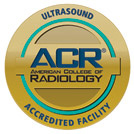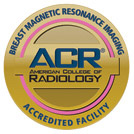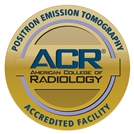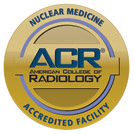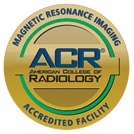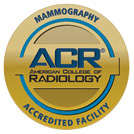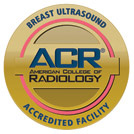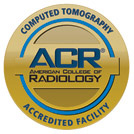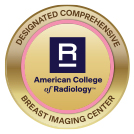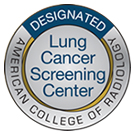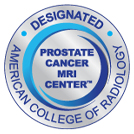Computed tomography angiography (CTA) combines injected contrast material with advanced imaging to get a closer, more detailed look at a patient’s blood vessels. This procedure may be used to diagnose and assess cardiovascular conditions, including aneurysms or a blocked coronary artery.
What is CT Angiography?
X-ray, computed tomography (CT) or magnetic resonance imaging (MRI) produces comprehensive images of the body’s blood vessels.
With CT technology, a scanner takes images of the blood vessels and surrounding tissues after the patient is injected with contrast dye through a small catheter in an arm vein.
The scanner itself is a large, circular-shaped machine with a tunnel through the middle, where a gantry holding the X-ray tube and electronic X-ray detector sits. An exam table passes in and out of the tunnel, where the patient lies down. When you pass into the scanner, you may notice guided lines projected onto your body and hear a buzzing or clicking sound. These factors assist with proper positioning and operation, as well as ensure the images are as accurate and detailed as possible.
The X-ray beams and detectors go around the body and the scanner records the X-rays that come out. Throughout the procedure, the table moves to different positions, allowing the scanner to capture multiple parts of your body. The result is often a cross-sectional 2D or 3D image that’s significantly more detailed than traditional X-ray technology, with your blood vessels highlighted in bright white.
Meanwhile, a radiologist in a separate room checks the images on a computer monitor. Afterward, advanced computer programs and monitors are used to identify signs of disease.
CT angiography is ideal for imaging parts of the:
- Brain
- Neck
- Heart
- Chest
- Abdomen
- Legs and feet
- Pelvis
- Arms and hands
CT angiography has a two-fold benefit for many patients: Imaging may eliminate the need for surgery but if an operation is necessary, it gives the surgeon a more accurate sense of direction. CT angiography is less invasive, has fewer complications, delivers more detailed results and generally costs less than traditional angiograms.
Who Should Have This Procedure?
A doctor may request CT angiography if you show signs or could be predisposed to:
- Aneurysms
- Blockages within the blood vessels
- Blood clots
- Vascular malformations
- Blood vessel rupture or damage
- Injury to the cardiovascular system
- Tumors involving the brain, neck or parts of the cardiovascular system
- Congenital abnormalities of the cardiovascular system
The scan can help detect:
- Potential abnormalities in the aorta, chest, abdomen and arteries
- Plaque in the arteries, which could lead to a stroke
- A small aneurysm or arteriovenous malformation (AVM) around the brain or in the body
- Diseases involving the kidney and arteries
- Injuries to arteries in the chest, neck, abdomen, pelvis or limbs from a traumatic incident
- Tumors, especially if they’re being fed by an artery
- Splitting in the aorta
- The degree of coronary artery disease
- Pulmonary embolism
- Congenital malformations in the heart and blood vessels
- Stenosis and obstruction of the blood vessels
Results may help your doctor determine if you’re a candidate for:
- Endovascular surgery
- Kidney transplant
- Implanting a stent
- Chemoembolization
- Internal radiation therapy
- Coronary bypass
What You Can Expect
Prior to the procedure, patients are advised to:
- Inform the technologist of an allergy to the contrast material or a chance of pregnancy.
- Tell the technologist if you have kidney issues, as the iodine-based contrast material could adversely affect kidney function.
- Discuss any medications, recent illnesses and long-term medical conditions, especially if you have a history of heart disease, kidney disease, thyroid problems, diabetes or asthma.
- Especially if contrast dye will be used, patients may be instructed to avoid eating or drinking anything several hours before the procedure.
- Leave all jewelry and metal objects, including eyeglasses, dentures, piercings and hearing aids at home, as these may affect image quality.
- Arrive in loose, comfortable clothing. You may be asked to wear a gown.
After the procedure, patients can return to their day-to-day activities with no downtime. The radiologist will review your scans follow-up regarding the results. Your doctor may request further testing if an abnormality is found or a particular treatment plan is needed.
Has your doctor recommended CT angiography? Contact us to make an appointment today!





